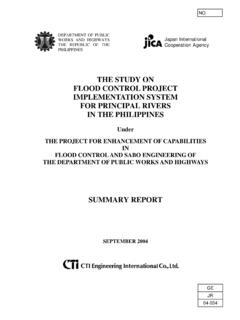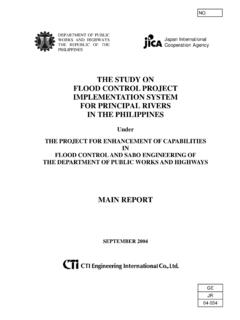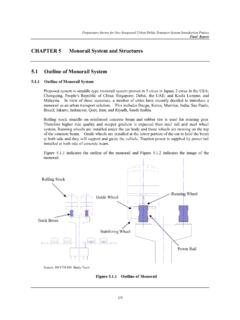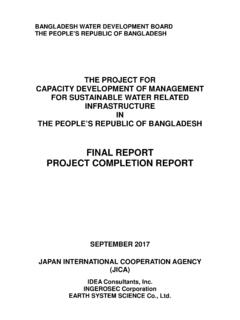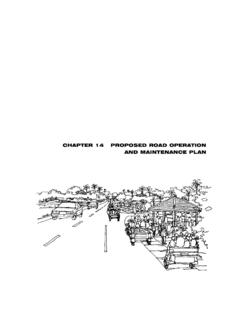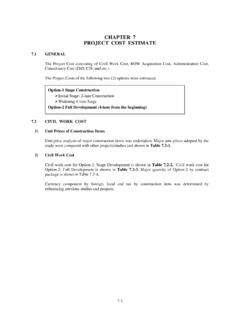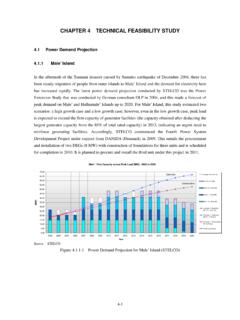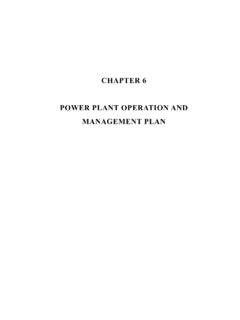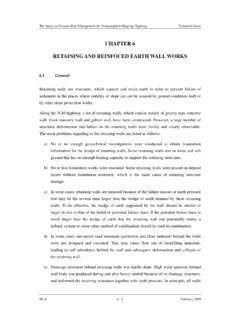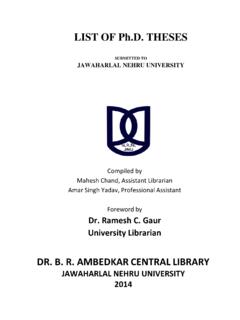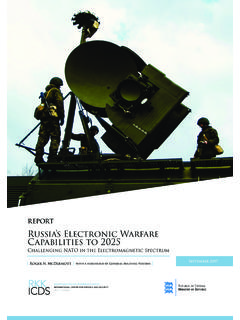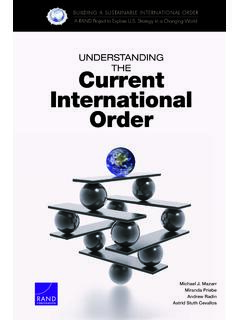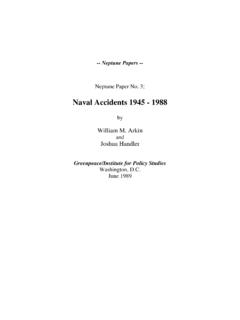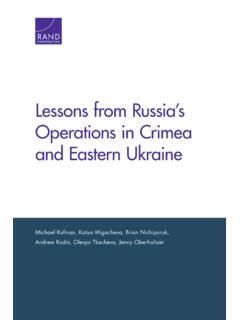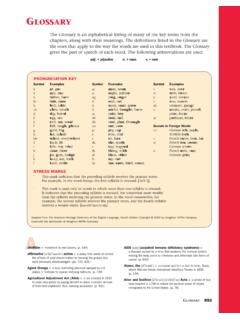Transcription of BASIC EDUCATION SECTOR ANALYSIS REPORT - ETHIOPIA - …
1 HM JR 12-064 BASIC EDUCATION SECTOR ANALYSIS REPORT - ETHIOPIA - AUGUST 2012 JAPAN INTERNATIONAL COOPERATION AGENCY (JICA) INTERNATIONAL DEVELOPMENT CENTER OF JAPAN INC. (IDCJ) BASIC EDUCATION SECTOR ANALYSIS REPORT - ETHIOPIA - AUGUST 2012 JAPAN INTERNATIONAL COOPERATION AGENCY (JICA) INTERNATIONAL DEVELOPMENT CENTER OF JAPAN INC. (IDCJ) (Source: UN Emergency Unit for ETHIOPIA , March 2000) Map of ETHIOPIA i Abbreviations ABE: Alternative BASIC EDUCATION ABEC: Alternative BASIC EDUCATION Center ADB: African Development Bank ARM: Annual Review Meeting BMZ/GIZ: German Federal Ministry for Economic Cooperation and Development/ German Agency for International Cooperation BOFED: Bureau of Finance and Economic Development CAS: Country Assistance Strategy CDRF: Capacity Development Results Framework CF: Catalytic Fund CIDA: Canadian International Development Agency CPD: Continuous Professional Development CRC: Cluster Resource Center CTE.
2 College of Teacher EDUCATION DFID: Department for International Development EC: Ethiopian Calendar EC: European Commission ECCE: Early Childhood Care and EDUCATION EFA: EDUCATION for All EGRA: Early Grade Reading Assessment EHEECE: Ethiopian Higher EDUCATION Entrance Certificate Examination ELIC: English Language Improvement Center ELQIP: English Language Quality Improvement Program ELTIP: English Language Training Improvement Program EMIS: EDUCATION Management Information System EPF: EDUCATION Pooled Fund EPRDF: Ethiopian People's Revolutionary Democratic Front ESDP: EDUCATION SECTOR Development Program EGSECE: Ethiopian General Secondary EDUCATION Certificate Examination ETB: Ethiopian Birr ETP: EDUCATION and Training Policy FAL: Functional Adult Literacy FTI: Fast Track Initiative GDP: Gross Domestic Product GEQIP: General EDUCATION Quality Improvement Program GER: Gross Enrollment Rate GNI (PPP): Gross National Income (Purchasing Power Parity) GTP: Growth and Transformation Plan ii HDP: Higher Diploma Program HIV/AIDS: Human Immunodeficiency Virus/Acquired Immune Deficiency Syndrome ICT.
3 Information Communication Technology IDA: International Development Association IDCJ: International Development Center of Japan Inc. INSET: In-service EDUCATION and Training ISCED: International Standard Classification of EDUCATION (of the UNESCO) JICA: Japan International Cooperation Agency JRM: Joint Review Mission KFW: German Development Bank MDG: Millennium Development Goals MDTF: Multi Donor Trust Fund MLC: Minimum Learning Competency MOE: Ministry of EDUCATION MOFED: Ministry of Finance and Economic Development NAES: National Adult EDUCATION Strategy NGO: Non Governmental Organization NIR: Net Intake Rate NLA: National Learning Assessment OEB: Oromia EDUCATION Bureau PASDEP: Plan for Accelerated and Sustained Development to End Poverty PBS: Protection of BASIC Services Program PER: Public Expenditure Review PISA.
4 Programme for International Student Assessment PPF: Program Preparation Fund PRESET: Pre-service EDUCATION and Training PSLCE: Primary School Leaving Certificate Examination PSR: Pupil Section Ratio PTA: Parent Teacher Association PTR: Pupil Teacher Ratio REB: Regional EDUCATION Bureau SACMEQ: The Southern and Eastern Africa Consortium for Monitoring Educational Quality SBEM: School Based English Mentoring SIDA: Swedish International Development Cooperation Agency SIP: School Improvement Plan/ Programme SMAPP: The Project on Increasing Access to Quality BASIC EDUCATION through Developing School Mapping and Strengthening Micro-Planning SMASE: Strengthening of Mathematics and Science EDUCATION SMIS: School Management Information System SNNP: Southern Nations, Nationalities and People s Region iii STI: Science, Technology and Innovation SWS: SECTOR Working Group TDP: Teacher Development Programme TEACH: Transforming EDUCATION for Adults and Children in the Hinterland TELL: Teach English for Life Learning TESO: Teacher EDUCATION System Overhaul ToT: Training of Trainers TTI: Teacher Training Institute TVET: Technical and Vocational EDUCATION and Training UNESCO: United Nations Educational, Scientific and Cultural Organisation UIS.
5 UNESCO Institute for Statistics UNICEF: United Nations International Children's Emergency Fund UPE: Universal Primary EDUCATION USAID: United States Agency for International Development USD: United States Dollar WEO: Woreda EDUCATION Office WFP: World Food Programme WHO: World Health Organisation WOFED: Woreda Office of Finance and Economic Development WS: Work Shop ZEO: Zone EDUCATION Office iv i Executive Summary Chapter 1: Outline of the Study As the target year of the Millennium Development Goals (MDGs) and EDUCATION for All (EFA) approaches, non-traditional forms of aid modalities such as SWAPs and general budget support are progressively tested and used in providing aid. In this context, the Japan International Cooperation Agency (JICA) has commissioned a study to carry out a comprehensive and in-depth ANALYSIS of the EDUCATION SECTOR in 13 countries in Sub-Saharan Africa and Latin America1 so that more strategic and effective programs/projects can be formulated.
6 The purpose of the study is twofold: 1) to gather relevant data and information, analyze them, and to identify priorities in the EDUCATION SECTOR in each country, and 2) to propose how to improve the quality and the methodologies of JICA s ANALYSIS on BASIC EDUCATION . Chapter 2: Political and Socio-economic Situation in ETHIOPIA In ETHIOPIA , a pro- soviet military junta (the Derg) established a socialist state in 1974. But as a result of continuing confusion in social conditions, the Ethiopian People s Revolutionary Democratic Front (EPRDF) took over the political power in 1991. The EPRDF government also won the election in May 2010, and Prime Minister Meles Zenawi was reappointed. The major economic indicators are: GDP per capita USD 1,040 (PPP, current international $) (2010), GDP growth rate (2010), life expectancy (2010) and adult literacy rate (2005).
7 Chapter 3: Educational Policies and Reforms The basis of the Ethiopian EDUCATION SECTOR reform is the EDUCATION and Training Policy (ETP), enacted in 1994. The EDUCATION SECTOR Development Programme (ESDP) was planned afterwards to realize ETP and it was the outset of a series of the ESDPs which has continued to be updated for the subsequent 20 years. In the Growth and Transformation Plan (GTP), a national development plan for 5 years from 2010/11 to 2014/15, the government aims to achieve MDGs by 2015 and to become a middle-income country by 2020-2023. The ESDP-IV (2010/11-2014/15) is the development programme to realize the GTP and focus on the quality of EDUCATION , especially implementing the General EDUCATION Quality Improvement Programme (GEQIP) components started in 2008.
8 Supervisory authority is the Ministry of EDUCATION , which formulates national plan, frameworks and guidelines. Regarding programme planning, implementation and monitoring, however, it is delegated to 9 regions and 2 city councils. Chapter 4: Status and Challenges of BASIC EDUCATION SECTOR Development [Access] As a result of the policy priority and financial input to achieve universal primary EDUCATION by 2015 targeted in the ESDPs, primary EDUCATION achieved a drastic expansion. In 1 The target countries are Kenya, ETHIOPIA , Uganda, Rwanda, Malawi, Zambia, Cameroon, Senegal, Mali, Niger, Burkina Faso, Guatemala, and Nicaragua. ii 2010/11, the gross enrollment rate (GER) was in primary EDUCATION .
9 The net enrollment rate (NER) marked in 2010/11, the highest ever and showing a significant improvement from in 2001/02. Now, the wave of increasing enrollment has reached secondary EDUCATION , improving GER of general secondary schools for the last 10 years to as high as in 2010/11. The GER of the entire secondary EDUCATION was in 2010/11, slightly decreased from the previous year. [Internal Efficiency] When assuming the enrollment of 2002 was 1000, the cohort survival rate of grade 5 was 550 and the students who graduated in 8 years were only 264, meaning that only one fourth of the entrants survived. The grades which have many repeaters and readmits are grades 1, 2 and 8. Repetition rate of primary EDUCATION is (2010/11), and the highest was recorded in grade 8 ( ).
10 Comparing with other African countries, promotion and cohort survival rates in ETHIOPIA are lower than other countries. The average duration of study for graduates was to years in the past ten years. In most cases, the duration of girls is longer than that of boys. [Equity] Girls have relatively lower GER and completion rate than boys in the first cycle of primary EDUCATION (grades 1 to 4). Even for the repetition rate, girls are higher than boys in recent years. Although the national average of GPI is and getting closer to 1, some regions still have lower Gender Parity Index (GPI) than other regions, such as and Looking at regional figures, Afar and Somali regions, called the Emerging area, have lower indicators than others.
